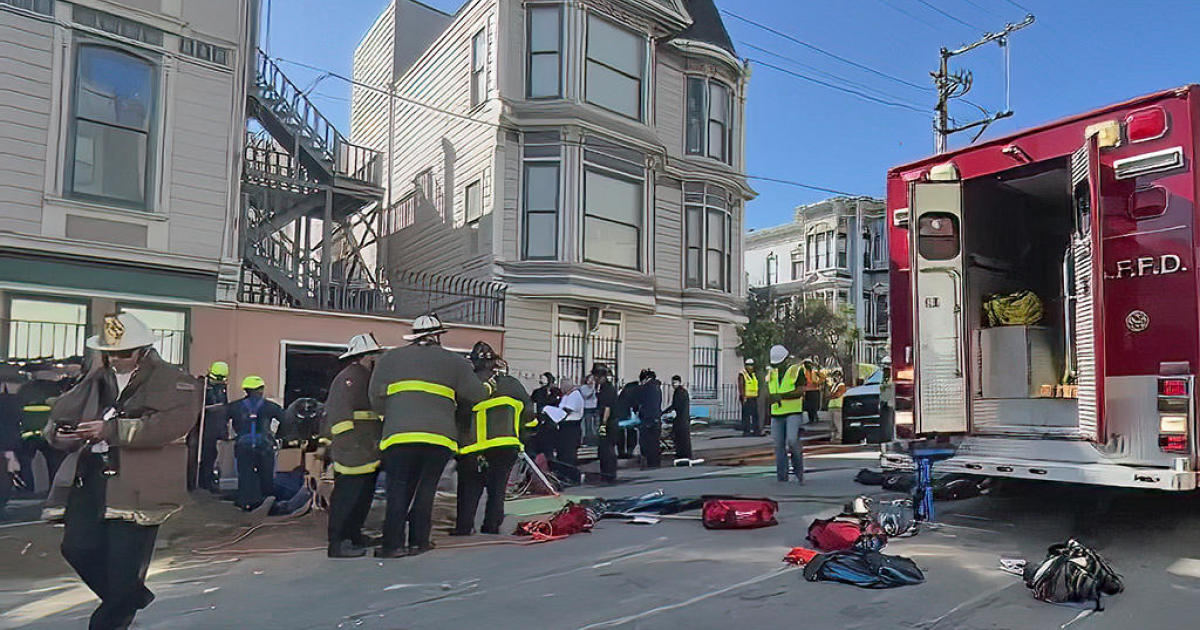6 Ingenious Earthquake Safety Tools To Emerge 1 Year After Napa Quake
(CBS SF) -- It's been one year since the 6.0-magnitude Napa earthquake damaged homes, disrupted businesses and rattled nerves.
In that time, the earthquake in Napa, Nepal and other parts of the world have also shaken up the way we prepare and respond to earthquakes.
From early warning systems that provide a 30-second countdown to robots that search for heartbeats above the rubble, here are six of the most innovative tools changing the way we think about earthquake safety.
1. Facebook, Google tools for locating friends and family in disaster zones
Facebook launched a new feature that lets users notify friends and family with a single click that they are safe during or after natural disasters.
The tool, called "Safety Check," became available worldwide last October to the social network's 1.32 billion users on computers and mobile devices.
The Safety Check was activated for people affected by the Nepal earthquake in April.
Google also used its "Person Finder" tool to help people search for and post information about missing friends and family in the region.
2. Early warning systems to give people enough time to take cover
Earthquake warning systems can provide enough time for trains to brake, utilities to shut off gas lines and people to dive under a table until the shaking stops.
Using 300 sensors scattered across California, ShakeAlert works by detecting P-wave energy, the first energy to radiate from an earthquake, which rarely causes damage.
The Napa quake last August proved the technical capabilities of the early warning system by giving BART a 10-second notice before the shaking started.
3. Bay Area tech company 'floating' buildings during earthquakes
A Bay Area company responsible for creating what could be the first functioning hoverboard may now have a way to keep a building from moving during a major earthquake with the very same technology.
Los Gatos-based Arx Pax is integrating the ShakeAlert earthquake early-warning software into a patented three-part foundation system to protect against earthquakes, floods and sea-level rise.
"The ShakeAlert program aligns well with our long-term vision," Henderson said. "Our goal is to eliminate structural movement by pinpointing the exact time an object or building's 'landing gear' should retract and activate the hover engines." Read More.
4. New California earthquake forecast on which fault could deliver next big quake
The probability California will experience a magnitude 8 or larger earthquake in the next couple of decades has increased, according to the U.S. Geological Survey.
A March study by the Third Uniform California Rupture Forecast, or UCERF3, sheds new light on where earthquakes will likely hit in California over the next couple of decades and how big they're expected to be.
There's a lower chance for for the Northern San Andreas near San Francisco partly because of the relatively recent 1906 earthquake on that fault. Probabilities on two other Bay Area faults, the Hayward–Rodgers Creek and the Calaveras, actually rival or exceed those on the Northern San Andreas, mostly because they are both relatively ready.
Tom Brocher, a research geophysicist with the USGS, said the reality is a major quake is expected on the on the Hayward-Rodgers Creek Fault system in the near future.
"The past five major earthquakes on the fault have been about 140 years apart, and now we're 147 years from that 1868 earthquake, so we definitely feel that could happen any time," Brocher said.
5. Heartbeat sensors and robots to help with search and rescue efforts
NASA's sensing technology, which can detect a heartbeat through up to 30 feet of rubble, is one of the most accurate systems for locating survivors trapped under collapsed rubble. The system, called Finding Individuals for Disaster and Emergency Response (FINDER), was first developed to detect other planets and now credited for saving lives in at least one village affected by the Nepal quake.
6. Keeping the electricity flowing when the power grid is off
Several companies are exploring energy solutions to keep the lights on after an earthquake. Inspired by the 2011 Japanese earthquake, Nissan released a two-way charger that can take a fully charged Nissan vehicle and power a home for two days.
The Tesla Powerwall home battery unveiled in May lets homeowners store solar energy or electricity from the power grid during low demand hours. As the growth of energy storage and home batteries becomes more affordable, it's likely more residents will be able to keep the power on for days following a major earthquake.



